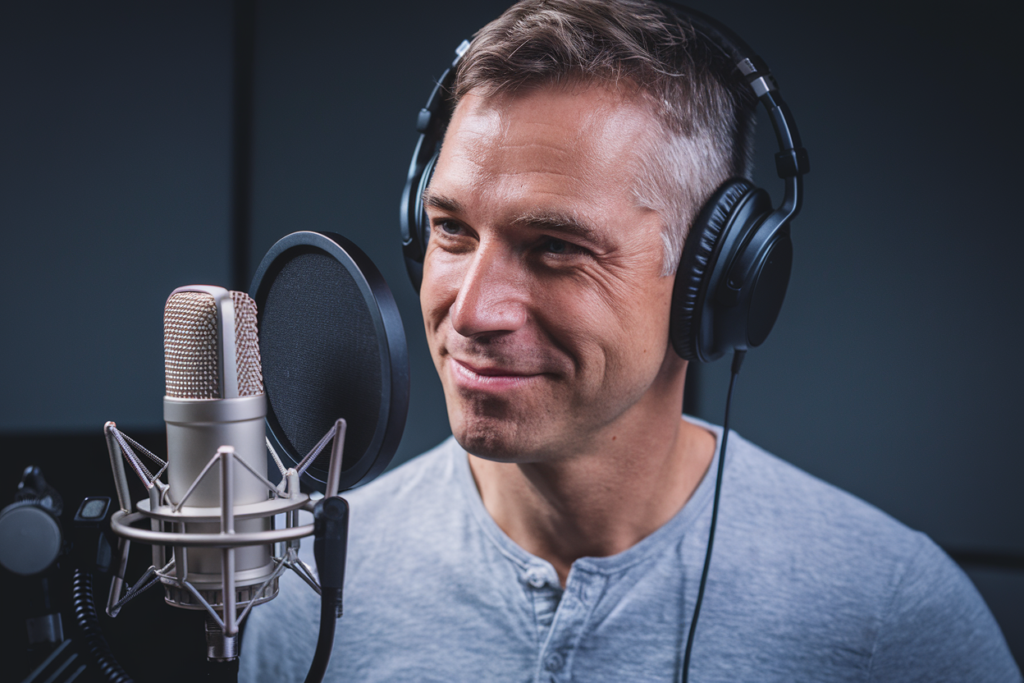Key Takeaways
- Understanding Accents: Recognize the distinct characteristics of Received Pronunciation (RP) and Northern accents, as they shape character identities and influence audience perceptions in voiceovers.
- Role of RP: RP is associated with authority and sophistication, making it ideal for formal voiceover roles in corporate, educational, or high-end media that require a polished sound.
- Value of Northern Accents: Northern accents evoke warmth and authenticity, resonating well with audiences seeking relatable characters. They are increasingly preferred for storytelling applications due to their emotional connection.
- Historical Context Matters: The evolution of both RP and Northern accents reflects changing societal attitudes towards class representation in media, impacting the effectiveness of voiceover choices.
- Industry Demand Trends: There is a growing demand for both RP and Northern accent voiceovers; understanding these trends helps tailor projects to target specific demographics effectively.
- Cultural Significance: Both accents carry deep-rooted cultural meanings that influence how brands are perceived by audiences, emphasizing the importance of choosing the right accent for effective communication.
Ever wondered how the subtle differences between RP and Northern accents can impact voiceovers? In the world of UK voice acting, these accents not only shape character identities but also influence audience perceptions. While Received Pronunciation (RP) often conveys authority and sophistication, Northern accents bring warmth and authenticity to performances.
Understanding RP and Northern Accents
When it comes to UK voiceovers, understanding the nuances of accents can significantly impact your project. Received Pronunciation (RP) and Northern accents each bring unique qualities that shape character identity and audience perception.
Definition of RP
Received Pronunciation, often referred to as RP, represents a standard accent associated with the educated class in England. It’s characterized by its clarity and neutrality, making it a popular choice among voice actors for formal or authoritative roles. Many perceive RP as sophisticated, which is why it often appears in media targeting higher social classes or professional settings. Using an RP voiceover can convey expertise and credibility, essential for brands aiming to establish trust with their audience.
Definition of Northern Accents
Northern accents encompass a range of regional dialects found across northern England. Unlike the polished tone of RP, these accents are known for their warmth and authenticity. They add character depth and relatability, resonating particularly well with audiences seeking genuine connections. Voice artists using Northern accents often evoke feelings of friendliness and approachability—qualities that enhance storytelling in commercials or narratives aimed at everyday consumers. By choosing a Northern accent for your voiceover work, you tap into the rich cultural heritage associated with this part of the UK while appealing to diverse demographics.
Historical Context
Understanding the historical context of Received Pronunciation (RP) and Northern accents adds depth to their roles in voiceovers. These accents not only reflect regional identity but also cultural evolution over time.
Evolution of RP
Received Pronunciation emerged in the late 19th century as a marker of social status and education. It gained popularity among the upper classes, becoming synonymous with authority and sophistication. As a result, many voice actors embraced RP for formal roles in radio, film, and television. Its crisp enunciation offers clarity that enhances communication, making it a favored choice for brands aiming to project professionalism.
Evolution of Northern Accents
Northern accents represent a rich tapestry of regional diversity across England. Historically viewed as less prestigious than RP, these accents have shifted perceptions over recent decades. They convey warmth, authenticity, and relatability—qualities increasingly valued in voiceovers today. Voice artists using Northern accents can create characters that resonate deeply with audiences by emphasizing genuine emotion rather than formality.
The evolution of both RP and Northern accents illustrates how societal attitudes shape voiceover choices. Understanding this history helps you appreciate the nuances each accent brings to character development and audience connection.
Characteristics of RP and Northern Accents
Understanding the characteristics of Received Pronunciation (RP) and Northern accents enhances your awareness of how these accents shape voiceover work. Each accent carries unique phonetic features that influence how audiences perceive characters.
Phonetic Features of RP
Received Pronunciation stands out with its distinct clarity and precision. You’ll notice:
- Vowel Sounds: RP often employs a non-rhotic pronunciation, meaning the ‘r’ at the end of words isn’t pronounced. For instance, “car” sounds like “cah.”
- Diphthongs: The vowels in words like “goat” or “face” are elongated and pronounced as two-part sounds, adding a level of sophistication.
- Intonation Patterns: RP speakers often use rising intonation for questions but maintain a steady tone for statements, enhancing authority in voiceovers.
These elements contribute to an authoritative voice that’s ideal for formal roles or narratives requiring trustworthiness.
Phonetic Features of Northern Accents
Northern accents offer diverse qualities that convey warmth and authenticity. Key features include:
- Rhoticity: Most Northern accents pronounce their ‘r’s clearly, making words like “car” sound more rounded. This trait adds relatability to characters.
- Vowel Variations: You’ll hear distinctive vowel shifts; for example, “bath” may sound like “barth,” creating a cozy feel in dialogue.
- Regional Diversity: From Geordie to Mancunian, each variation has its nuances, allowing voice artists to capture regional identities effectively.
These phonetic traits help establish emotional connections with audiences while enriching character depth in storytelling through voiceovers.
By grasping these characteristics, you enhance your understanding of how accent choices impact communication and audience engagement in various projects.
Voiceover Industry Preferences
Voiceovers play a crucial role in shaping brand identity and audience connection. Understanding the preferences for different accents can enhance your project’s effectiveness.
Demand for RP Voiceovers
Received Pronunciation (RP) voiceovers are highly sought after in various industries, especially in formal settings. Many brands choose RP because it exudes authority and sophistication. This accent often resonates with clients looking for a polished sound that commands attention. You might notice RP frequently used in corporate videos, educational content, and high-end commercials due to its clarity and precision.
Marketers appreciate how RP voice actors convey professionalism, making them ideal for projects targeting an upscale demographic or needing a trustworthy tone. If you aim to project an image of prestige or reliability, opting for RP can significantly bolster your message’s impact.
Demand for Northern Accent Voiceovers
Northern accent voiceovers have seen a surge in demand as brands recognize their warmth and authenticity. These accents evoke relatability, enhancing emotional connections with audiences. Many consumers find Northern accents comforting and approachable, making them perfect for storytelling applications like animations or character-driven content.
Clients increasingly prefer Northern voice actors when aiming to build trust with diverse demographics or wanting to portray genuine characters. The unique phonetic features of these accents can bring depth to narratives while fostering engagement among listeners who appreciate relatable voices. For projects where emotional resonance is key, Northern accent voiceovers may be the way to go.
Understanding these preferences helps you make informed decisions when selecting voice talents that align with your goals. Whether you lean toward the sophistication of RP or the charm of Northern accents, choosing the right voice can elevate your project’s overall effectiveness.
Cultural Significance
Understanding the cultural significance of accents in voiceovers enhances your approach to selecting voice talent. Accents carry deep-rooted meanings, influencing audience perceptions and character identities.
Perceptions of RP in Media
Received Pronunciation (RP) often represents authority and sophistication in media. When you hear an RP voiceover, it tends to evoke images of professionalism and upper-class status. This accent’s clarity makes it a go-to choice for corporate videos, educational content, and high-end commercials. Many clients believe that using RP adds credibility to their brand messages. You might find yourself associating RP with trustworthy information or refined storytelling due to its historical ties with education and social prestige.
Perceptions of Northern Accents in Media
Northern accents offer a contrasting perception, embodying warmth and authenticity that resonates deeply with audiences. Voiceovers featuring Northern accents create relatable characters, making them ideal for animations or narrative-driven projects. These voices often convey genuine emotion, helping viewers connect on a personal level. As societal attitudes shift toward valuing diversity and authenticity, Northern accents gain traction across various media platforms. Clients increasingly appreciate how these accents can enhance storytelling richness while establishing trust with diverse demographics.
Exploring these perceptions equips you with valuable insights into how different accents influence audience engagement in voiceovers.
Conclusion
Choosing between RP and Northern accents in voiceovers isn’t just about sound; it’s about the message you want to convey. RP offers a level of sophistication that can enhance formal projects while Northern accents bring warmth and relatability, ideal for engaging storytelling.
As you navigate the voiceover landscape, consider how each accent aligns with your brand’s identity and audience expectations. The right choice can significantly impact how your message is received. Embracing the nuances of these accents allows you to connect more deeply with listeners, making your content not just heard but felt.
Frequently Asked Questions
What is Received Pronunciation (RP) in voice acting?
RP, or Received Pronunciation, is an accent associated with authority and sophistication. It emerged in the late 19th century and is often favored for formal roles such as corporate videos and educational content due to its clarity and professionalism.
How do Northern accents impact voiceovers?
Northern accents convey warmth and authenticity, making them ideal for character-driven projects like animations. They foster emotional connections with audiences, enhancing relatability and trust between brands and diverse demographics.
Why are accents important in voiceover work?
Accents significantly influence audience perceptions and character identities. RP adds credibility through its association with professionalism, while Northern accents evoke feelings of warmth, creating deeper engagement in storytelling.
How have societal attitudes toward accents changed over time?
Historically, Northern accents were seen as less prestigious compared to RP. However, shifts in societal values now recognize the emotional resonance of Northern accents, increasing their popularity across various media platforms.
What are some key phonetic features of RP?
RP features non-rhotic pronunciation (dropping ‘r’ sounds), elongated diphthongs, and distinct intonation patterns. These characteristics contribute to its authoritative sound and make it suitable for professional settings.
What phonetic traits define Northern accents?
Northern accents are characterized by clear rhoticity (pronouncing ‘r’ sounds), distinctive vowel variations, and regional diversity. These traits enhance emotional connection in storytelling by portraying genuine characters.
How do clients choose between RP and Northern accent voice actors?
Clients select based on the tone needed for their project; they prefer RP for sophistication in formal contexts while choosing Northern voices for warmth and relatability in narratives aimed at connecting with a broad audience.
Are there specific industries that favor one accent over another?
Yes! Corporate sectors typically favor RP due to its authoritative image. Meanwhile, creative industries like animation increasingly opt for Northern accents to ensure characters feel relatable and authentic to audiences.







